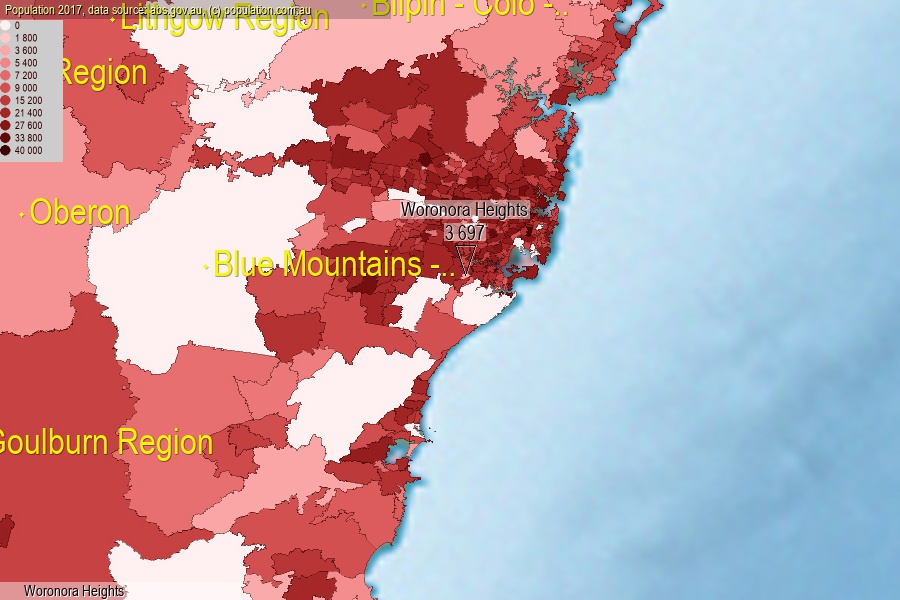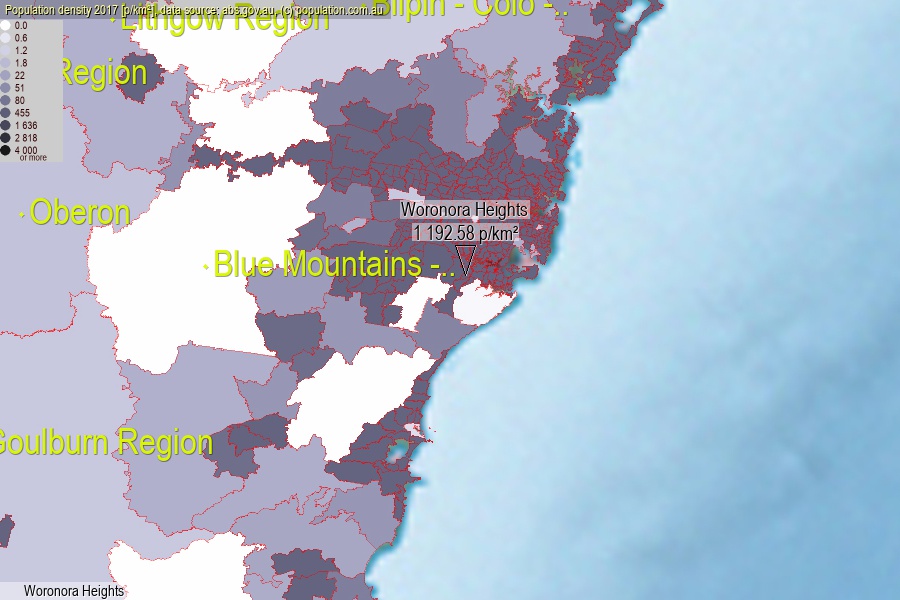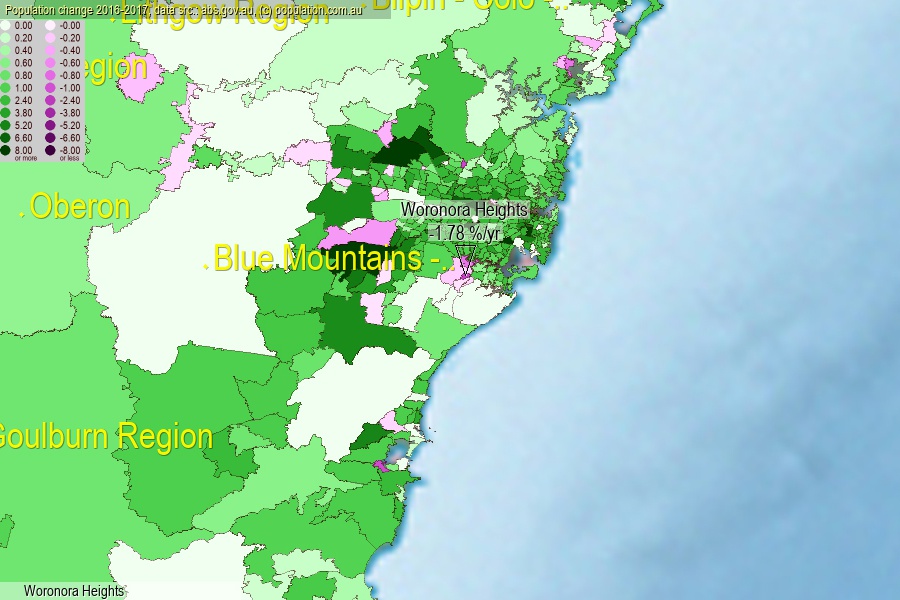 population.com.au
population.com.auLast official estimated population of Woronora Heights (as Statistical Area Level 2) was 3 697 people (on 2017-06-30)[2]. This was 0.01% of total Australian population and 0.046% of NSW population. Area of Woronora Heights is 3.10 km², in this year population density was 1 192.58 p/km² . If population growth rate would be same as in period 2016-2017 (-1.78%/yr), Woronora Heights population in 2025 would be 3 202. [0]



Click to enlarge. Woronora Heights is located in the center of the images.
Population [people], population density [p./km²] and population change [%/year] [2]
View borders » (new window) [4]
[2001-2002] +0.55 %/Yr.
[2002-2003] -0.65 %/Yr.
[2003-2004] -0.87 %/Yr.
[2004-2005] -0.71 %/Yr.
[2005-2006] -0.58 %/Yr.
[2006-2007] +1.17 %/Yr.
[2007-2008] +0.63 %/Yr.
[2008-2009] +0.70 %/Yr.
[2009-2010] +0.05 %/Yr.
[2010-2011] -0.17 %/Yr.
[2011-2012] -1.20 %/Yr.
[2012-2013] -1.44 %/Yr.
[2013-2014] -0.95 %/Yr.
[2014-2015] -1.29 %/Yr.
[2015-2016] -1.41 %/Yr.
[2016-2017] -1.78 %/Yr.
[0] Calculated with linear interpolation from officially estimated population
[1] Read more about SA2 and Australian Statistical Geography Standard (ASGS) on abs.gov.au
[2] Population data from Australian Bureau of Statistics (Population and density: 2017; change: 2016-2017)
[3] Digital Boundaries: Australian Statistical Geography Standard (ASGS) 2016.
[4] Border coordinates are simplifyed using Ramer-Douglas-Peucker algorithm.